Potrebujeme váš súhlas na využitie jednotlivých dát, aby sa vám okrem iného mohli ukazovať informácie týkajúce sa vašich záujmov. Súhlas udelíte kliknutím na tlačidlo „OK“.
ASTM D1230-10
Standard Test Method for Flammability of Apparel Textiles
Automaticky preložený názov:
Štandardná skúšobná metóda pre horľavosť Oblečenie textilu
NORMA vydaná dňa 15.7.2010
Informácie o norme:
Označenie normy: ASTM D1230-10
Poznámka: NEPLATNÁ
Dátum vydania normy: 15.7.2010
Kód tovaru: NS-16704
Počet strán: 16
Približná hmotnosť: 48 g (0.11 libier)
Krajina: Americká technická norma
Kategória: Technické normy ASTM
Kategórie - podobné normy:
Anotácia textu normy ASTM D1230-10 :
Keywords:
apparel flammability, fabric flammability, Apparel fabrics, Career apparel fabrics, Flammability--textile fabrics/fibers, ICS Number Code 13.220.40 (Ignitability and burning behaviour of materials and products), 59.080.30 (Textile fabr)
Doplňujúce informácie
| Significance and Use | ||||||||||||||
|
Test Method D1230 cannot be recommended for the acceptance testing of commercial shipments since Federal regulations require apparel fabrics to meet the criteria of 16 CFR Part 1610 and correlation of test results with actual performance has not been established. Although Test Method D1230 is not recommended for acceptance testing, it is useful because it provides a less expensive and time consuming research tool than 16 CFR Part 1610. In case of a dispute arising from differences in reported test results when using Test Method D1230 for testing of commercial shipments, the purchaser and the supplier shall conduct comparative tests to determine if there is a statistical bias between their laboratories. Competent statistical assistance is recommended for the investigation of bias. At a minimum, the two parties shall take a group of test specimens which are as homogeneous as possible and which are from a lot of material of the type in question. The test specimens shall be randomly assigned in equal numbers to each laboratory for testing. The average results from the two laboratories shall be compared using a nonparametric test for unpaired data and an acceptable probability level chosen by the two parties before testing is begun. If a bias is found, either its cause must be found and corrected or the purchaser and the supplier must agree to interpret future test results in light of the known bias. All fabrics made of natural or regenerated cellulose, as well as many made from other natural or man-made fibers, are combustible. Some combustible fabrics when used for clothing are potentially dangerous to the wearer because of such factors as ease of ignition, flame spread time, amount of heat released, and design of the garment. This test measures two such factors: ease of ignition and flame spread time. In order to place fabrics in one of the three flammability classes, arbitrary limits have been selected for time of application of the flame and for time of flame spread. These limits are based on extensive testing experience and are believed to be a useful guide in judging the relative flammability of apparel textiles. It must be understood, however, that no guarantee can be given and none is implied that garments made from a fabric or product falling into any one of the flammability classes will not be hazardous under some conditions. Because of the sensitivity of fabrics to ambient atmospheric conditions, technique of specimen preparation, and inherent variability in the cloth itself, test results are not always closely reproducible either in the same laboratory or among several laboratories. Finishes and fabric surface changes can exert a large effect on flammability. Therefore, fabrics are tested before as well as after one cycle of drycleaning followed by laundering. This test method is not applicable to hats, gloves, footwear, or interlining fabrics. |
||||||||||||||
| 1. Scope | ||||||||||||||
|
1.1 This test method covers the evaluation of the flammability of textile fabrics as they reach the consumer for or from items other than children's sleepwear or protective clothing. 1.2 This test method measures and describes the response of materials, products, or assemblies to heat and flame under controlled conditions, but does not by itself incorporate all factors required for fire hazard or risk assessment of the materials, products, or assemblies under actual fire conditions. 1.3 Fire testing is inherently hazardous. Adequate safeguards for personnel and property shall be employed in conducting these tests. Note 1—This test method is not identical to 16 CFR Part 1610, Flammability of Clothing Textiles. Consumer Product Safety Commission regulations require that fabrics introduced into commerce meet the requirements of 16 CFR Part 1610. 1.4 The values stated in SI units are to be regarded as the standard; inch-pound units are provided for information only. 1.5 This test method does not purport to address all of the safety concerns, if any, associated with its use. It is the responsibility of the user of this test method to establish appropriate safety and health practices and determine the applicability of regulatory limitations prior to use. |
||||||||||||||
| 2. Referenced Documents | ||||||||||||||
|
Podobné normy:
Historická
1.5.2013
Historická
15.6.2010
Historická
1.10.2013
Historická
1.2.2013
Historická
15.7.2013
Historická
1.10.2013
Odporúčame:
Aktualizácia technických noriem
Chcete mať istotu, že používate len platné technické normy?
Ponúkame Vám riešenie, ktoré Vám zaistí mesačný prehľad o aktuálnosti noriem, ktoré používate.
Chcete vedieť viac informácií ? Pozrite sa na túto stránku.


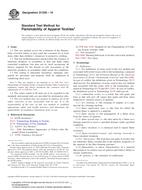
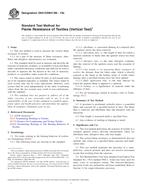 ASTM D6413/D6413M-13..
ASTM D6413/D6413M-13..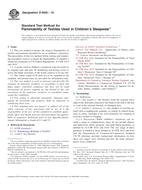 ASTM D6545-10
ASTM D6545-10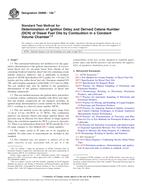 ASTM D6890-13be1..
ASTM D6890-13be1..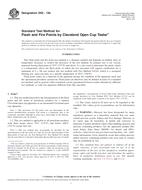 ASTM D92-12b
ASTM D92-12b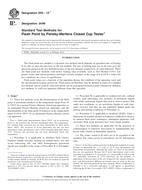 ASTM D93-13e1
ASTM D93-13e1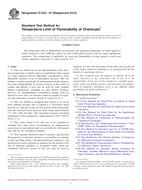 ASTM E1232-07(2013)..
ASTM E1232-07(2013)..
 Cookies
Cookies
